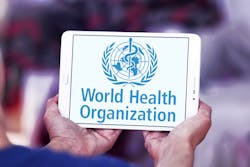On Aug. 31, the World Health Organization (WHO) announced via a press release its new compendium of innovative health technologies for COVID-19 and other priority diseases.
According to the release, “The COVID-19 pandemic has highlighted the need for innovative health technologies that can help countries improve health outcomes by providing shortcuts to solutions despite lack of infrastructure and resources. However, many of the new technologies that have come to market are unaffordable or unsuitable for low- and middle-income countries.”
That said, “To ensure that all countries benefit from health innovation, WHO has compiled a compendium of 24 new technologies that can be used in low-resource settings.”
Mariângela Simão, WHO assistant director general for access to health products, was quoted in the release saying that “Innovative technologies are accelerating access to healthcare everywhere, but we must ensure that they are readily available in all health facilities, fairly priced, and quality-assured. WHO will continue to work with governments, funders, and manufacturers to promote sustainable supplies of these tools during and beyond the COVID emergency.”
The main objective of the compendium was to select and assesses technologies that can have not only an immediate impact on COVID-19 preparedness and response, but a future impact as well. Fifteen of the technologies are already commercially available in some countries, while the rest are in still in prototype.
Further, “The compendium includes simple items ranging from a colorized bleach additive, which allows the naked eye to identify non-sterilized surfaces and objects, to more complex though easy-to-use equipment such as a portable respiratory monitoring system and ventilators with an extended battery that can be used where electricity is not available or unstable. The list also includes a deployable health facility for emergencies decked out in a shipping container.”
“WHO has been assessing innovative technologies for the last 10 years, some of the selected products are now addressing priority health problems in low-resource settings,” the release states. “A critical example is a smartphone application that allows the user to instantly record accurate blood pressure measurements. According to a report released by WHO last week, the number of adults aged 30–79 years with hypertension has increased from 650 million to 1.28 billion in the last 30 years and almost half [of] these people do not know they have hypertension.”
The release concludes that “The compendium provides a full assessment of the technologies, carried out by a group of international experts working with WHO technical teams, on the basis of compliance with WHO specifications regarding performance, quality, and safety; suitability in low-resource settings; affordability; ease of use; and regulatory approval status. This information is vital to help governments, non-governmental organizations, and funders decide which products to procure.”


